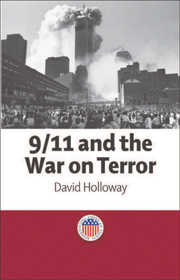Book contents
- Frontmatter
- Contents
- List of Illustrations
- Series Editors' Preface
- Acknowledgements
- Introduction
- 1 History
- 2 Politics
- 3 Mass Media
- 4 Cinema
- 5 Literature
- 6 Photography and Visual Art
- Conclusion
- Appendix A Timeline
- Appendix B Synoptic biographies
- Annotated bibliography of further reading and texts cited
- Index
5 - Literature
Published online by Cambridge University Press: 05 August 2013
- Frontmatter
- Contents
- List of Illustrations
- Series Editors' Preface
- Acknowledgements
- Introduction
- 1 History
- 2 Politics
- 3 Mass Media
- 4 Cinema
- 5 Literature
- 6 Photography and Visual Art
- Conclusion
- Appendix A Timeline
- Appendix B Synoptic biographies
- Annotated bibliography of further reading and texts cited
- Index
Summary
The 9/11 Novel
Classifying a literary genre, particularly a new or emergent one, can be a fraught process. Genres are hardly ever watertight things. They spill over into and borrow from other genres and may contain multiple ‘subgenres’. Some generic examples may contain some generic elements but not others. Readers themselves may be unfamiliar with the genre that is assumed to guide their reading of a given generic text. They may disagree among themselves on the elements that count as generic, or may read through a prism that has little to do with genre as such. Yet even with these reservations, and with a fairly elastic definition of ‘the 9/11 novel’ in place, a striking set of themes, motifs and literary forms could be seen at work, regularly and distinctively enough to be considered generic, in the first flush of novel-length writing about 9/11 and its consequences – that is, 9/11 fiction of the ‘crisis’ years or the ‘early 9/11 novel’, from Philip Roth's The Plot Against America (2004) to Cormac McCarthy's The Road (2006).
The early 9/11 novel generalised from contemporary events a working definition of historical experience as trauma; meaning that history in general, not just 9/11, was often cast as an affliction that engulfed human agency and influence, leaving no foothold from which to fashion either effective notions of participative citizenship or art. The early 9/11 novel cohered as a generic world of heightened subjectivities and interiorised or ‘narcissistic’ narrative voices that were often emotionally damaged, unstable or mentally ill, and that viewed both history and the ungovernable public spaces beyond the self as dangerous terrain.
- Type
- Chapter
- Information
- 9/11 and the War on Terror , pp. 107 - 128Publisher: Edinburgh University PressPrint publication year: 2008



